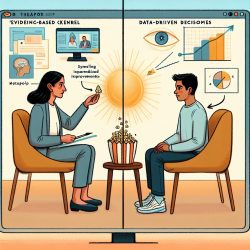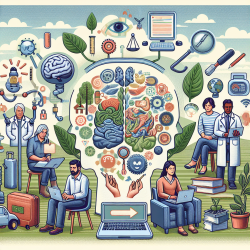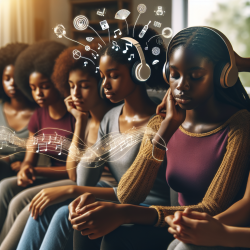Introduction
In the realm of marriage and relationships, effective communication and satisfaction are key ingredients for a successful partnership. A recent systematic review and meta-analysis titled Improved couple satisfaction and communication with marriage and relationship programs: are there gender differences? sheds light on how various programs can enhance these aspects. This blog post will explore the findings and offer insights for practitioners aiming to improve their skills and outcomes for couples.
The Power of Marriage and Relationship Programs
The study analyzed 12 intervention studies, categorizing them into three types: education/communication skills programs, enrichment programs, and therapy programs. The findings revealed that therapy programs had the most significant impact on couple relationship satisfaction (CRS), with a medium to large effect size. Interestingly, these programs had a larger effect on wives compared to husbands.
Communication is Key
When it comes to relationship communication (CRC), enhancement programs showed a small to large effect, while educational programs had a small to medium effect. However, these programs were more effective for women than men, highlighting a gender difference in response to these interventions.
Implications for Practitioners
For practitioners, these findings suggest prioritizing therapy programs to improve CRS and enhancement programs for CRC. Additionally, considering the gender differences in program effectiveness, it may be beneficial to tailor interventions to better meet the needs of both men and women. Here are some practical steps practitioners can take:
- Incorporate therapy programs in interventions to maximize impact on relationship satisfaction.
- Focus on enhancement programs to boost communication skills among couples.
- Consider gender-specific approaches to address the unique needs of men and women.
- Encourage couples to participate in programs with 5 to 10 sessions for optimal results.
Encouraging Further Research
While the study provides valuable insights, it also highlights the need for further research, particularly in developing countries where such programs are less prevalent. Future studies should aim to explore the long-term effects of these programs and examine gender differences in non-heterosexual couples as well.
Conclusion
Marriage and relationship programs hold significant potential for enhancing couple satisfaction and communication. By leveraging the findings from this study, practitioners can better tailor their interventions to create positive outcomes for couples. As we continue to explore this field, further research will be crucial in addressing existing gaps and improving program effectiveness.
To read the original research paper, please follow this link: Improved couple satisfaction and communication with marriage and relationship programs: are there gender differences?—a systematic review and meta-analysis.










